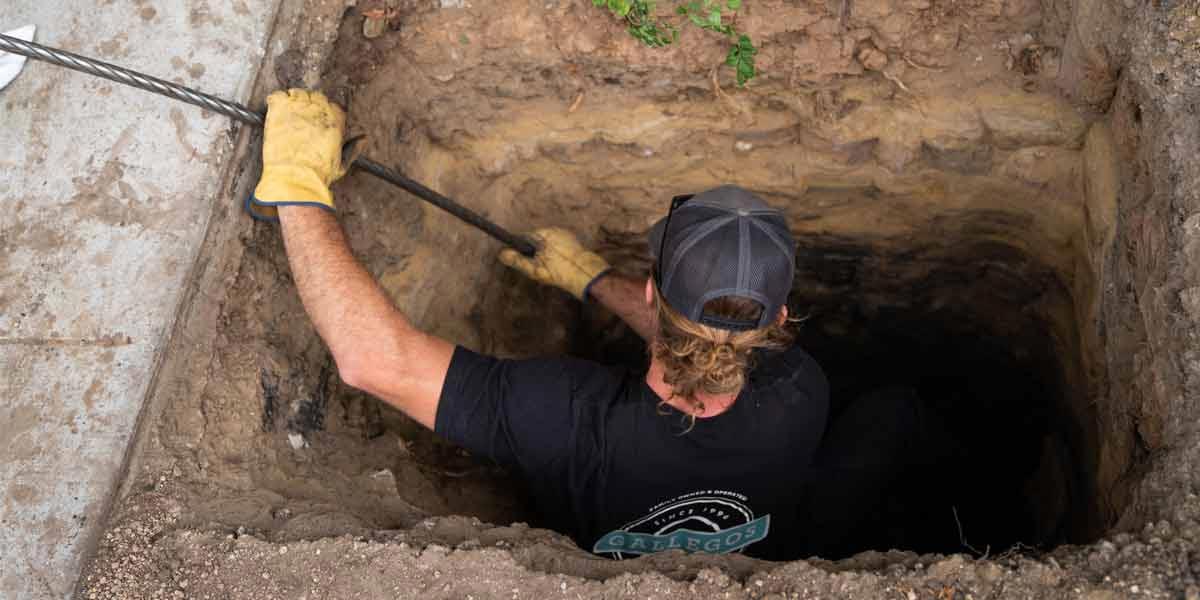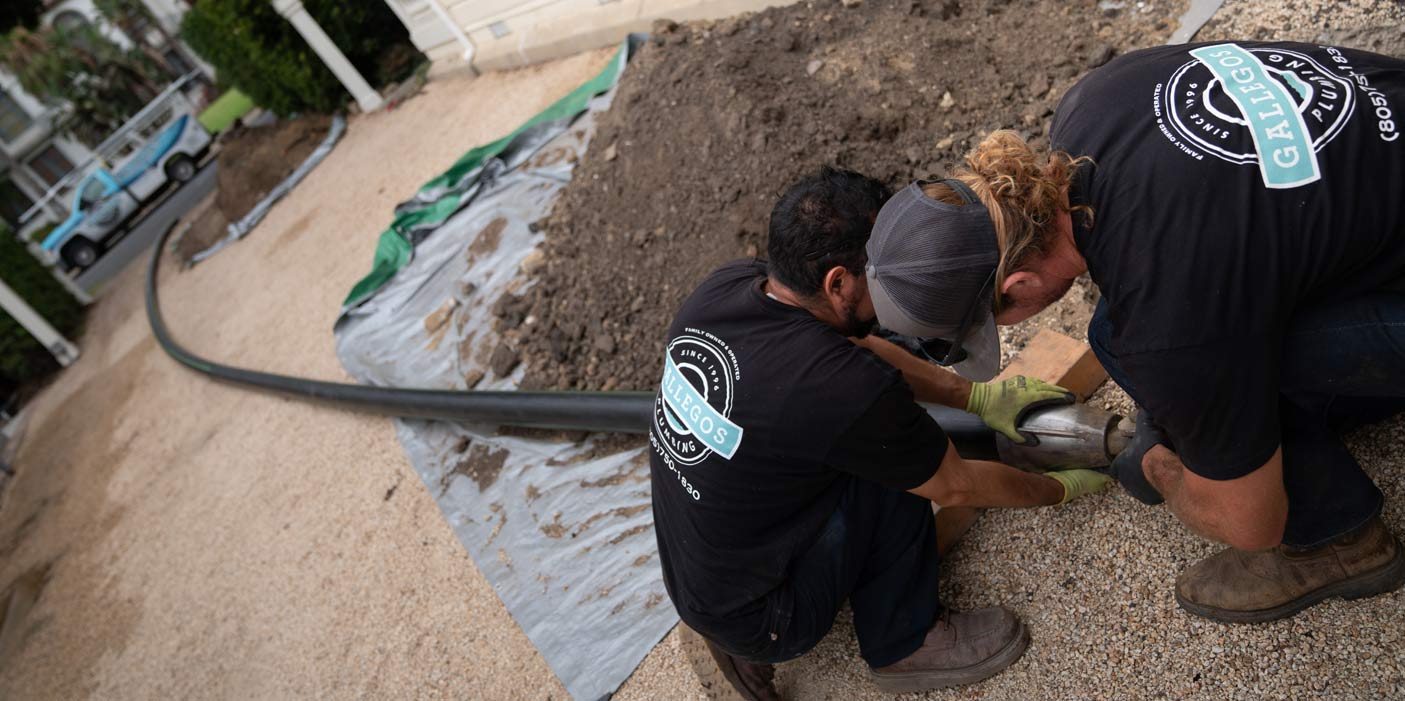Sewer line repair is a fact of life in this world. They wear out, get damaged, become defective, and plumbing pipelines are not something homeowners are excited to have happened. Unfortunately, where there is a sewer line problem, you can’t ignore the situation, and the sooner they are addressed, the better and safer. Broken sewer lines are frustrating, and they seem to burst at the more inopportune time.
Sewer Line Repair was inconvenient in the past, and they were destructive to the landscape and yard and could take days for the repair to be completed and your home back to normal. Today though, the plumbing industry has improved in several areas and on several levels, starting with trenchless sewer repair.
This piece will review the traditional sewer line repair methods: the Open-top excavation method and the latest invention that has turned to plumb up a notch, Trenchless Sewer Repair. We’re going to look at each method’s pros and cons and bring to the front whether the old fashion way is the better option or the new method is better.
Table of Contents
- What Is The Debate All About Anyway?
- Sewer Line Repair the Traditional Way
- Traditional Sewer Line Repair – The Advantages
- Traditional Sewer Line Repair – The Disadvantages
- Traditional Sewer Line Repair – How the Process Is Done
- Sewer Line Repair the Trenchless Way
- Trenchless Sewer Repair – The Advantages
- Trenchless Sewer Repair – The Disadvantages
- Trenchless Sewer Line Repair – When Is It Not Viable?
- Trenchless Sewer Line Repair – How the Process Is Done
- Step One: Getting Setup
- Step Two: The Initiation
- Step Three: The Completion
- In Closing
- Trust the Pros for Your Trenchless Sewer Line Repair and Replacement Services
What Is The Debate All About Anyway?
If new trenchless sewer repair technology has less destruction and achieves the same result, why is there even a debate? One requires that the landscape and lawn to be dug up – one does not. There are many levels and viewpoints for both sides of this debate. Traditional sewer line repair or trenchless sewer line repair is an ongoing debate that we don’t see an end in sight because they are both popular and valuable methods.
Sewer Line Repair the Traditional Way
The traditional method of sewer line repair method is destructive, but it is effective. This method requires digging a trench, sometimes several trenches, through the landscaping and lawn. Open-Top Excavating is an alternative method to Trenchless Sewer Repair and used to be the only method for repairing sewer lines. As the name suggests, the ground is excavated and opened up so the plumbing crew can get to the damaged sewer line. Once the sewer line repair or replacement is completed, the trenches are filled back in with the dirt.
The traditional Open-top excavating method requires heavy machinery and equipment to dig those trenches for sewer line repair. So, not only is there a trench, or several trenches, but there are tread marks from the heavy equipment too.
Are there advantages to using the traditional sewer line repair method, and what are the disadvantages?

» Traditional Sewer Line Repair – The Advantages
The first one that would make a homeowner consider this method is the cost. The traditional sewer line repair method is less expensive because it doesn’t require a specially trained plumber. What a plumber’s helper and shovel can’t do, they bring in a backhoe and excavation equipment to get down to the damaged sewer line.
» Traditional Sewer Line Repair – The Disadvantages
The traditional Open-top excavating method has limitations, with the first one being the invasive method. Before the sewer line repair can occur, the landscaping and lawns, sometimes the driveway and roadway, are dug up so that the plumbing crew can access the damaged pipe. In addition to being destructive, it can get expensive when bringing in backhoes and excavators. It is a labor-intensive process, which can add to the cost of the sewer line repair.
Traditional Sewer Line Repair – How the Process Is Done
Open-top excavating sewer line repair is disruptive with heavy equipment and a lot of manpower. The plumber may need a backhoe and an excavator for the work needed, along with a digging crew will dig up around the sewer line once the backhoe has reached the sewer line. Once the repair or replacement is complete, a new sewer pipe, usually PVC because they have a longer lifespan expectation, up to 100 years or longer.
After the heavy equipment has been removed and the crew has left, you need to put your landscaping and lawn back together. Any driveway or roadway dug up to complete the job will need to be repaired, which may be a few days before that can happen.
Sewer Line Repair the Trenchless Way
Trenchless sewer repair, the name tells it all. It is a trenchless way to do sewer line repairs. With the trenchless sewer line repair method, the landscaping and lawn are not disturbed other than two small holes. There is no need for the driveway or roadway to be disturbed. With specialized trained plumbers performing the sewer line repair, everything stays in place for the most part.
A minimal amount of digging is needed, usually only two holes, one hole on each end of the sewer line to be repaired or replaced. There are no trenches dug, no driveways or roadways dug up to reach the damaged sewer lines.
There are two primary processes used within the trenchless sewer repair technology: CIPP (cured-in-place pipelining) and Pipe Bursting.

Trenchless Sewer Repair – The Advantages
Trenchless sewer repair, a modern plumbing service has several advantages over the traditional sewer repair process, starting with cost. Trenchless sewer repair uses durable, high-quality materials instead of the same materials that the traditional method uses, which could later repeat the problem. The third advantage of the modern trenchless technology for sewer line repair is the landscaping, lawn, driveways, and roadways aren’t disturbed, making an inconvenient mess. Finally, the fourth advantage of trenchless sewer repair and replacement technology is the eco-friendly solution it offers with recycling the old materials that are removed.
Trenchless Sewer Repair – The Disadvantages
One drawback and limitation of using trenchless sewer line technology and the modern equipment needed: It can be expensive. While trenchless sewer line repair is less evasive than the traditional sewer line repair methods, it does cost more. The technology itself is an expense, and it requires the professional plumber to complete extensive training on the process. There are circumstances that trenchless sewer line repair isn’t possible, and the plumber will have to resort back to the traditional method of sewer line repair.
Trenchless Sewer Line Repair – When Is It Not Viable?
Whoa – wait a minute? Why isn’t trenchless sewer line repair always possible? It’s a new technology, and it is an excellent upgrade from the traditional method. However, there are situations where utility lines could be destroyed, or the sewer line is corroded and damaged beyond what the trenchless sewer line repair method can repair.
Does this mean that this sewer line repair method is more destructive than we are advised? Absolutely not! Let’s take a look at the process of a trenchless sewer line repair, which will explain why it isn’t always the best solution.
Related: Why Trenchless Sewer Repair can be a great option?
Trenchless Sewer Line Repair – How the Process Is Done
There are three steps to the entire process of trenchless sewer line repair. Each step has a crucial purpose, or the process of transitioning pipes won’t be successful.
» Step One: Getting Setup
This step is bringing in the necessary equipment and machines, getting them set up and in place. Then the bursting rods are installed that will break the existing sewer pipelines. Next, the bursting rods are fed through flexible guiding rods into the ground with the existing sewer lines, and the power source is placed in position.
» Step Two: The Initiation
The pipe launch pit is dug in this step, not a full trench like the traditional sewer line repair. The new pipe is then placed in the launch pit along with the expander that will help guide it into the old pipe’s space and fit correctly. The cutter and bursting rods are installed and secured. When this step is completed, the setup is ready to go.
» Step Three: The Completion
Now the bursting rods and cutting rod will work together and break the existing pipe apart and disperse the pieces into the surrounding ground. The new pipe is then installed with the expanding leading the way, pulling it down into the ground, filling the old sewer line pipe’s space. The additional equipment is removed, the tools are packed up, and the two small holes are filled, Now your life returns to its normal status. Your trenchless sewer line repair process is now completed. Out with the old and in with the new!
» In Closing
Wastewater is a part of our lifestyle today. From the bathrooms to the kitchen, we have wastewater, and for that, to process as intended, the sewer line is critical. It carries that wastewater away from your home and to either a municipal sewer system or your septic tank.
A sewer line must be installed and maintained correctly, or there is the possibility of severe consequences. When a sewer line isn’t draining correctly for the wastewater to be disposed of, raw sewage can back up inside the residence, leaving significant damage behind. Sewer gases can develop, a serious potential problem that can be deadly. Any sewer problem should be inspected by a professional plumber near you immediately.
Open-top excavating is the trench digging process to access the damaged sewer line, repair or replace them directly. This method is a straightforward process versus the trenchless sewer line repair option with sophisticated equipment and technology. It is hard to deny that the trenchless sewer line repair method is less destructive and evasive.
Trust the Pros for Your Trenchless Sewer Line Repair and Replacement Services
The two expenses you’re facing with either method have to restructure your landscape, lawn, and possibly the driveway and roadway with the traditional sewer line repair method, or the higher cost of the new technology trenchless sewer line repair.
When you’ve discovered you have sewer line issues, call the professional plumber in your region and get quotes on the work to be done. Ask about the traditional sewer line repair process and the trenchless sewer line repair process. Ask for certification, insurance, licenses, and current references for work similar to what you’ll be having done. Then follow through with checking those references. Taking care of it is a responsibility, and you want those outside your home to be as concerned with the job being right as you.
Contact your local plumbers for Professional Trenchless Sewer Repair in Thousand Oaks, Newbury Park and throughout Ventura County at Gallegos Plumbing today by calling (805) 243-2622.

